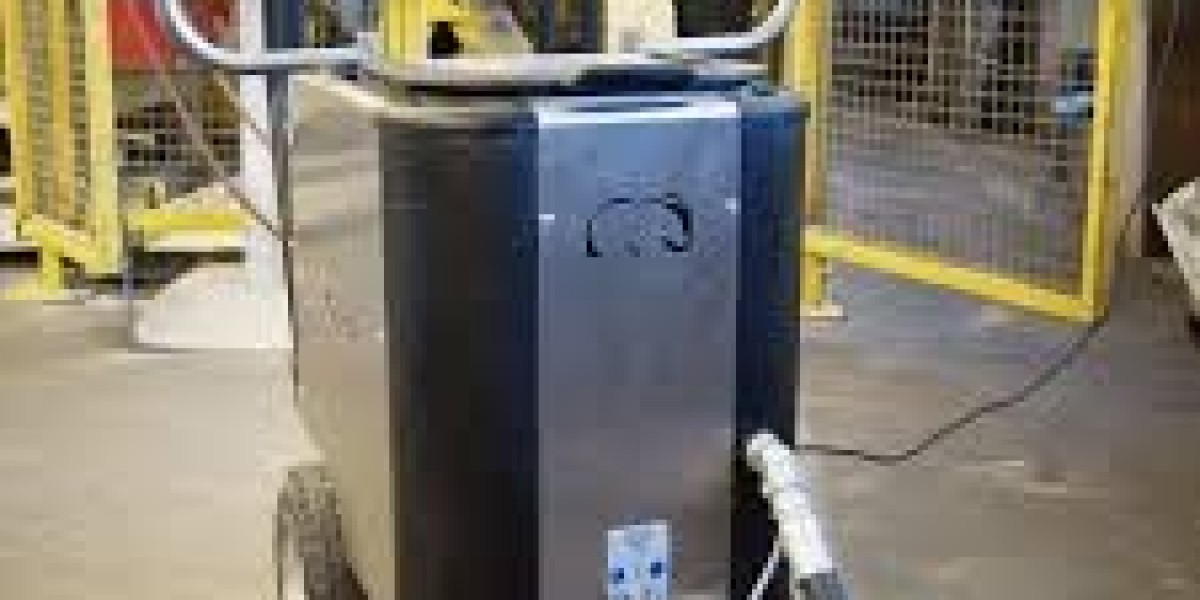Why Dry Ice Blasting Is the Smart Choice for Industrial Cleaning
In the world of industrial maintenance, cleanliness plays a crucial role in equipment performance and longevity. Machines covered in oil, grease, or dirt often operate less efficiently and require more frequent repairs. With advanced cleaning solutions from Top Dry Ice Products, businesses are turning to dry ice blasting — a modern, eco-friendly cleaning method that restores equipment without chemicals or water.
What Is Dry Ice Blasting
Dry ice blasting is a cleaning technique that uses compressed air to shoot solid carbon dioxide (CO₂) pellets at high velocity. When these pellets hit a surface, they instantly sublimate—transforming from solid to gas—without leaving any residue. The process combines the force of impact and the rapid temperature drop to lift away contaminants safely.
This dry and non-abrasive process is ideal for cleaning sensitive industrial machinery, electrical systems, and even food production equipment where traditional cleaning methods fall short.
How the Process Works
Dry ice blasting works on three key principles:
Impact energy – The pellets hit the surface and break apart layers of dirt or grime.
Thermal shock – The extreme cold (−109°F) causes contaminants to shrink and lose adhesion.
Gas expansion – The dry ice turns to gas, expanding under the debris and lifting it away.
Since dry ice evaporates instantly, no water or waste remains—just a clean, ready-to-use surface.
Why Industries Choose Dry Ice Blasting
Dry ice blasting stands out because it solves common industrial cleaning challenges. It is non-toxic, non-abrasive, and safe for complex components. It reduces downtime by allowing machinery to be cleaned in place and doesn’t generate secondary waste that needs disposal.
Unlike sandblasting or pressure washing, it won’t scratch metal surfaces, corrode wiring, or introduce moisture to sensitive equipment.
Benefits of Dry Ice Blasting
Industrial businesses benefit from dry ice blasting in many ways:
No secondary waste or residue — Nothing to clean up afterward.
Faster turnaround — No drying or reassembly required.
Environmentally friendly — No chemicals, solvents, or water.
Safe on electrical equipment — No risk of short circuits.
Extends machinery life — Prevents wear and corrosion.
Minimizes production downtime — Machines can stay operational during cleaning.
Key Applications in Industry
Dry ice blasting has versatile applications across different sectors:
Food and beverage plants – Cleans ovens, conveyors, and mixers without contaminating products.
Automotive factories – Removes paint, grease, and mold release agents from production lines.
Power generation facilities – Safely cleans turbines, transformers, and generators.
Aerospace and defense – Maintains precision tools and delicate components.
Printing operations – Eliminates ink and adhesive buildup from rollers and plates.
Its adaptability makes it a top choice for companies seeking safe, efficient, and reliable cleaning.
Environmental Benefits
As businesses strive for greener operations, dry ice blasting has become a leading sustainable solution. The CO₂ used for dry ice is collected from other industrial sources, meaning no new emissions are created. The process produces zero chemical waste and prevents water runoff, aligning perfectly with modern environmental regulations.
It’s also safe for employees—no exposure to harsh cleaning agents or toxic fumes, creating a healthier workplace.
Cost and Time Efficiency
One of the biggest advantages of dry ice blasting is how much time it saves. Traditional cleaning often requires machines to be dismantled and dried before restarting. Dry ice blasting allows equipment to be cleaned in place, dramatically reducing downtime and labor costs.
Since the method is gentle and residue-free, it also lowers maintenance expenses by extending the lifespan of machines and tools.
Comparing Cleaning Methods
Cleaning Method | Uses Water | Chemical Residue | Safe for Electronics | Time Efficiency |
Dry Ice Blasting | No | No | Yes | Excellent |
Pressure Washing | Yes | Yes | No | Moderate |
Chemical Cleaning | Yes | Yes | No | Slow |
Sandblasting | No | Yes | No | Moderate |
This table highlights why dry ice blasting consistently outperforms other industrial cleaning methods.
Safety Considerations
Dry ice blasting is safe when handled properly. Operators wear protective gloves, ear protection, and face shields, while ensuring good ventilation since CO₂ gas expands during cleaning. With proper training, the process is both efficient and secure.
Because no chemicals or abrasives are used, there’s no risk of surface damage, fire hazards, or toxic waste disposal.
The Future of Industrial Maintenance
As industries modernize, dry ice blasting continues to grow in popularity for its eco-friendly and time-saving benefits. Companies now recognize it as an essential part of preventive maintenance strategies. Regular dry ice cleaning ensures that machines run smoothly, remain compliant with regulations, and deliver consistent product quality.
Conclusion
Dry ice blasting is more than a cleaning technique—it’s a complete solution for improving efficiency, sustainability, and equipment reliability. With its residue-free results and safe operation, it has become the go-to method for modern industrial maintenance. Businesses that switch to this advanced technology gain cleaner operations, lower costs, and reduced downtime.
For dependable dry ice products and professional blasting services in New Jersey, visit Top Dry Ice to explore expert solutions that keep your facility running at peak performance.







